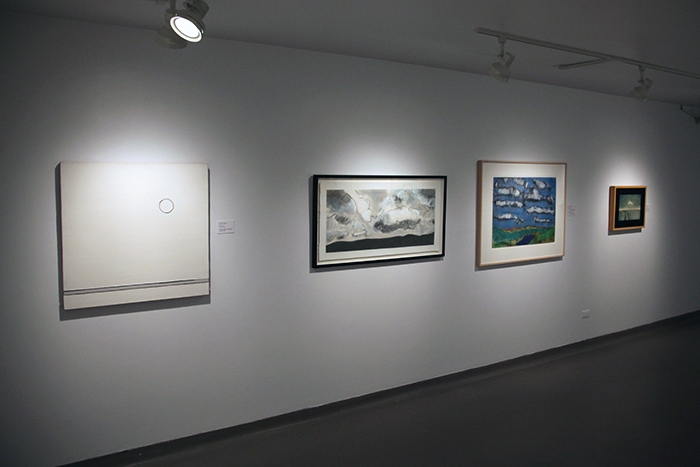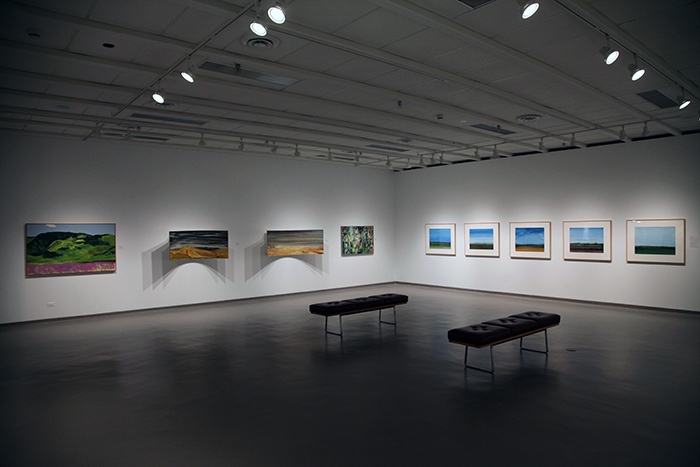Main Gallery
Imagined Space: Abstract Art from the Canadian Prairies
June 1 – August 18, 2016
Works from the U of L Art Collection
Curated by David Smith
Selected works from the U of L Art Collection that highlight some of the many artists working in abstract styles on the Canadian prairies. Featuring work by David Thauberger, Takao Tanabe, Robert Hurley, and others.
Curatorial Statment
What is abstraction? The term encompasses so many different strains of art production that applying a singular definition seems inadequate and unnecessary. One of my early mentors first explained to me that abstract art can be divided into two groups, figurative and non-figurative.
Non-figurative abstract art is created without an attempt to represent something from our physical surroundings. In this case the works defy a connection to reality and rely on a more intuitive creative process. In the 1940s American artists working in the Abstract Expressionist movement like Jackson Pollock or Mark Rothko created some of their most iconic works using this technique. In this exhibition the two works, both Untitled, on the outer panels by Alan Wood or the painting Untitled (Green McKay) by Arthur Fortescue McKay, exemplify the non-figurative style. These works refuse the canvas or paper as mediums for three dimensional representations and instead draw attention to the flat, two dimensional surfaces they occupy.
Figurative abstraction is a lot more difficult to put your finger on. Manipulating scale can be one of the tools an artist uses to create a figurative abstract work. Marianne Gerlinger’s painting, To the Core, depicts a landscape with an apple that has been magnified to monumental proportion. The contrast between the scale of the apple and the landscape informs the viewer of a departure from reality. Another mechanism an artist can use is simplification which involves eliminating details to pare down a composition to its essential forms. Takao Tanabe’s and Robert Newton Hurley’s paintings both employ this strategy in their approach to art making. The details which remain included in the works allow for a straightforward viewing of the carefully considered compositions. A third method is employed by David Thauberger whose prints rely on the emphasis of colour and shape to create visual interest. The colours are largely flat and the shapes are sharp and geometric. The result is a heightened sense of drama within an otherwise unassuming composition.
Though artists across all areas of Canada have at times worked in abstract styles, this exhibition focuses on those active on the prairies. The heavy emphasis on landscape within the included figurative abstract works illustrates the importance of local geography to those artists represented in the University of Lethbridge Art Gallery’s collection.
– David Smith, Assistant Curator/Preparator, U of L Art Gallery






